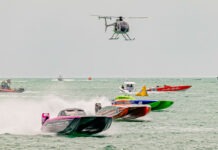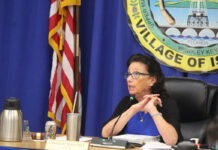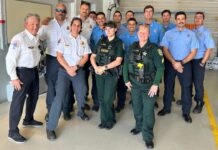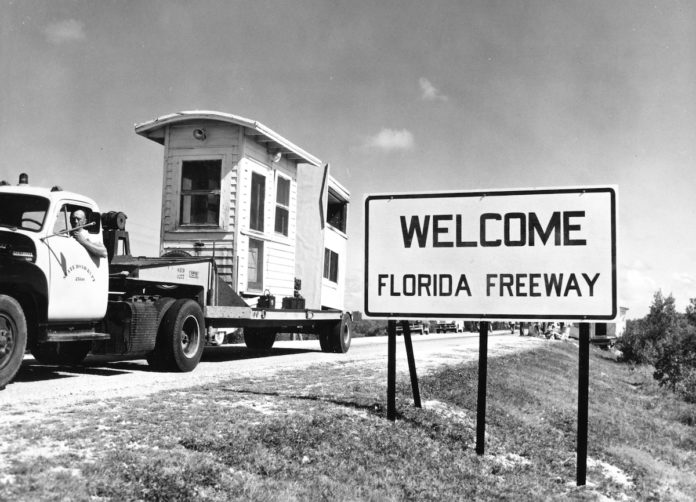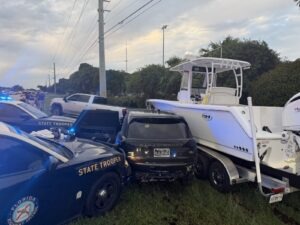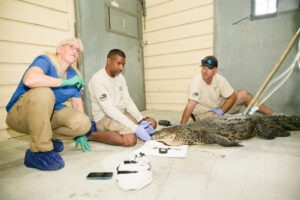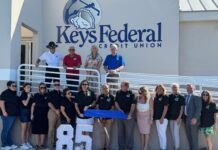Necessity inspired the first version of the Overseas Highway. It opened in 1928. The Category 5 Labor Day Hurricane forced a reimagining of the second version of the highway. It reopened in 1938. The third incarnation, the Overseas Highway 3.0, was influenced by WWII and the U.S. Navy. The newly improved route opened to the public in 1944.
As WWII intensified, two things became apparent. First, the Navy needed access to an additional freshwater source, a pipeline that connected the mainland to Key West. The project was shared by the State of Florida and the Navy. The Navy footed two-thirds of the bill. When it was completed, the 18-inch pipeline from the mainland to Key West followed the right-of-way of Henry Flagler’s Over-Sea Railroad. (Fun fact, it takes anywhere from ten days to two weeks for a drop of water to travel from the mainland to Key West.)
The Navy also needed to transport heavy equipment to its base at Key West. The current version of the highway was unable to handle the load. The road had some tight turns that were fine for cars and trucks and even Greyhound buses but were a little too tight to accommodate the Navy’s equipment. Also, some of the wooden bridges connecting the islands could not bear the extra weight of the military loads.
To ensure the wooden-trestle bridges were structurally sound, the Navy upgraded them. Also, the path was redirected to follow the right-of-way established by Flagler’s Over-Sea Railroad. This improvement shortened and straightened the highway. Up to this point in the highway’s history, it entered Key Largo via what is today called Card Sound Road and the Card Sound Bridge. When version 3.0 of the Overseas Highway opened to traffic, 17 miles of the highway had been eliminated. The 18-Mile Stretch was incorporated into the highway, a route that cut 14 miles off the road to Key West. The new and improved highway also bypassed the coastal route along Sugarloaf Key, shaving off another three miles from the highway.
Florida Governor Spessard Holland was among a cavalcade of participants in an automobile caravan that, on May 16, 1944, departed Key West at 10 a.m. and arrived at Florida City at 3:30 p.m. The official ribbon-cutting ceremony was held nearly two months later, on July 2, 1944, atop the scenic Bahia Honda Bridge. The Overseas Highway, at this point, also became part of U.S. 1 and linked Key West not just to the mainland but to Fort Kent, Maine.
In 1944, the Overseas Highway was still operating as a toll road. When the second version of the highway opened in 1938, two toll booths occupied small sections of the road. One toll booth was located at Lower Matecumbe Key, and the other was encountered on Big Pine. At $1 for the driver and a quarter for every passenger, the price was not cheap. The cost, in terms of 2021 dollars, would be in the neighborhood of $18.
When toll monies were collected, they were brought to the Overseas Road and Toll Bridge District headquarters at Pigeon Key. On Pigeon Key, however, shenanigans were afoot. Though created to repay a $3.6 million federal loan used in highway improvements completed in 1938, toll monies were being used to lavish district headquarters with expensive food and drink. In addition to a host of other fraudulent schemes uncovered by investigative reporters at the Miami Daily News, a $60,000 swimming pool was built at Pigeon Key. Additionally, the district manager was provided with a luxury cabin cruiser for fishing and other entertainment purposes.
In 1954, the Overseas Road and Toll Bridge District closed. On April 15, 1954, all tolls were lifted, and the booths were picked up and hauled away. Signs popped along the side of the road that declared the highway was now the “Florida Freeway.” The Florida Keys communities protested this “renaming” of their road. Their voices were heard, the signs removed, and the road once again became known as the Overseas Highway.
The road would continue to see improvements. In 1969, the 65-foot high Card Sound Bridge was constructed. 1972 would see the completion of the modern Bahia Honda Bridge. The new Seven Mile Bridge opened in 1982. The Overseas Highway, by the way, begins or ends, depending on your perspective, at the Monroe County line near Mile Marker 112. Once the road crosses into Dade County, it becomes the Dixie Highway.


